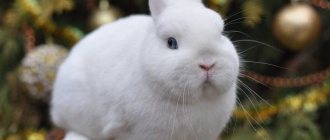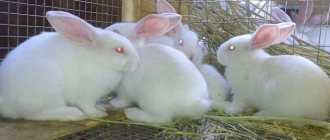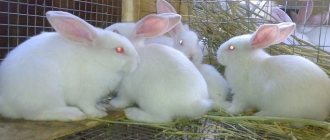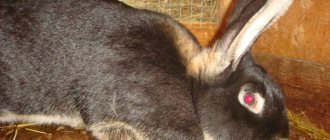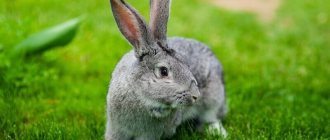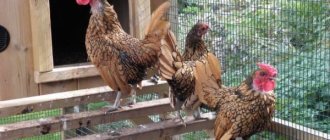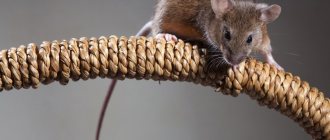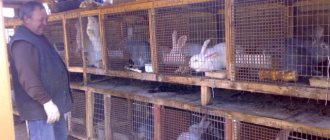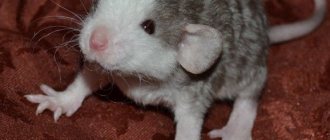In rabbit breeding, the term “Rex” unites several different breeds, representatives of which have luxurious plush fur. Only some of them grow large enough and are bred for meat or skins, while others are miniature in size and kept as pets.
Let's figure out what dwarf rex rabbits are and how to care for them.
Decorative Rex rabbits are dwarf kings in plush coats.
In rabbit breeding, the term “Rex” unites several different breeds, representatives of which have luxurious plush fur. Only some of them grow large enough and are bred for meat or skins, while others are miniature in size and kept as pets.
Let's figure out what dwarf rex rabbits are and how to care for them.
How to choose a pet
To become the owner of a purebred and absolutely healthy Rex rabbit, it is recommended to buy an animal from trusted breeders. It is advisable to take your pet to a new home no earlier than he is 60 days old. At the time of purchase, the dwarf rabbit must have a veterinary passport with vaccination records and a pedigree.
When purchasing a Rex, you also need to pay attention to:
- on conditions of detention;
- behavioral characteristics;
- visual compliance with the breed standard;
- health status.
The Dwarf Rex is easily distinguished from other breeds by its shiny plush coat and short, broken mustache.
The following signs indirectly indicate the health of a rabbit:
- clean ears (no crusts or discharge);
- clear, non-watery eyes;
- no dirt under the tail;
- thick, shiny, not tousled coat;
- smooth skin without scratching, rashes and redness.
On a note. If you lift a healthy baby rabbit by the scruff of the neck, its body will tense like a spring, and not sag like a sack.
Rex rabbits are small funny animals with short ears and short plush fur. Representatives of the breed easily get used to hands and do not cause much trouble. Therefore, they are often kept as pets.
Appearance
Dwarf Rex rabbits were obtained through careful selection. To reduce weight, blood from representatives of miniature varieties was added to the original breed.
As a result of hard work, an officially approved European standard appeared in 1992, which contains a clear description of the dwarf rex.
Interesting! Translated from Latin, rex means “royal.” The rabbit earned this name thanks to its luxurious plush fur.
According to the current standard, a typical representative of the breed must have the following anatomical features:
- Average weight – 0.6-1.5 kg.
- The head is short and large.
- The ears are erect, rounded at the tips. The length of the canvas is 45-55 mm.
- The mustache is short and broken.
- The body is stocky, cylindrical in shape, with an indistinct dewlap.
- The tail is short.
- The hind limbs are noticeably longer than the forelimbs.
- The fur is short and dense. The optimal hair length is 1.4-1.7 cm. The colors of Rex rabbits are very diverse. The standard allows more than 25 color variations. The most popular are white, blue, black, brown and two-color Rex. Less common in the breed are tricolor, fiery red, silver and speckled rabbits.
On a note. The list of existing colors continues to expand. Thus, in 2012, thanks to the efforts of breeders, Rex rabbits with the “silver marten” coloring were bred.
History of the breed
The appearance of a litter of chestnut rabbits from gray rabbits aroused the extraordinary interest of breeder A. Gillette, who decided to keep the unusual animals to try to breed them in the future. Because of their brown color, they decided to call the animals “castors” (beaver rabbits). At that time, scientists could not yet accurately explain this modification, but now the cause has already been clearly established - a gene mutation.
As a result of 5 years of experiments, the first Rexes were presented at the 1924 zoological exhibition in Paris. The long-eared animals were a fabulous success among the participants of the congress, and they were officially given the status of a separate breed, and the basic Standards of the species were prescribed.
| → mutation of the dominant R (normal type of fur) to the recessive gene r (short hair and its curliness) → | Rex + Netherland Dwarf Rabbit→ Dwarf Beaver Rex |
|
But the breeders did not stop there. As a result of crossing the Dutch dwarf breed with Rex, miniature copies of their parents were born. The decorative breed received official recognition at the end of 1966. But the study of the species and its selection does not stop to this day. As a result of many year-long experiments, about 20 species of Rex were obtained.
Character and behavior
The dwarf rex is a rabbit with a calm, phlegmatic temperament. He is very timid and needs to be handled with care. The dwarf rex is afraid of loud and sharp sounds. He has a very developed sense of smell and can be frightened by foreign smells.
The mini rex rabbit takes a long time to get used to its new environment, but after adaptation it becomes very good-natured. He gets along well with all family members and other pets. The nimble, fussy animal loves to mischief.
Left unattended, a dwarf rabbit will definitely start gnawing on everything it can get its hands on.
Decorative Rex is endowed with high intelligence and is easy to train. He quickly gets used to his name and learns to use the litter tray without any problems.
Health and life expectancy
The Rex rabbit breed does not belong to the category of long-livers. The average life expectancy of dwarf animals is 5-6 years. Although there are cases when they lived up to 8-10 years.
Rex rabbits are endowed with fairly strong immunity. But the breed has a predisposition to the following diseases:
- myxomatosis;
- rabies;
- hemorrhagic fever;
- pododermatitis.
Prevention of these diseases is timely vaccination and maintaining cleanliness in the cage.
Rules of care
Caring for the Rex breed is simple. To ensure the health and development of animals, it is necessary to clean the premises weekly, clean the feeders, and it is advisable to change the water every day.
Animals must be combed to maintain the condition of their fur and to avoid the appearance of tangles. If necessary, their nails are trimmed.
In addition, it is important to carry out all veterinary measures - regular examinations of animals, routine vaccinations and preparation for mating.
Home improvement
For home keeping, the dwarf rex is given a spacious, durable cage with a solid floor and closely spaced bars. It will be equipped with a closed drinking bowl, a heavy ceramic feeder, a tray for going to the toilet and a house in which the animal can retire.
A cage for a decorative rabbit is installed in a shaded, well-ventilated place, away from drafts, direct sunlight and heating appliances. The floor is covered with bedding, which is changed at least once every 2-3 days.
On a note. To ensure that the rabbit does not lack exercise, it is regularly released from the cage. To avoid possible injuries and damage to the owner's property, all electrical wires are hidden in the room in advance.
The dwarf rabbit is offered balls and cardboard boxes as toys.
Features of keeping at home
The dwarf Rex rabbit is considered the best decorative breed. Undemanding care and good health are the main points that rabbit breeders highlight from this species. And the key to a long happy life for animals is affection, care and constant communication with eared pets. Moderately active and friendly animals quickly get along in any home and find a common language with all household members.
Home improvement
The recommended cage area for a pet is from 0.28 m2 (the larger and more spacious, the better for the animal). To make a home, you must use galvanized mesh. It is better to choose a removable tray (for ease of maintenance). The litter is changed as it gets dirty, but at least once every 3 days.
Do not place your home near heating appliances, in a draft or in direct sunlight.
Feeding
The diet of the dwarf Rex includes:
- hay in unlimited quantities (including coarse - for grinding teeth);
- succulent food (vegetables, fruits, dried grass);
- concentrates (grain legumes) – up to 65% of the total volume of feed);
- tree branches;
- granulated feed.
Hygiene procedures
The decorative Rex rabbit is a short-haired animal that requires minimal care. But it is still necessary to periodically carry out basic hygiene procedures for your pet:
- combing with a brush or cloth;
- washing the eyes with warm water;
- cleansing the ears with cotton wool soaked in boric alcohol;
- nail trimming.
Rabbit character and taming
By nature, Rexes are fairly calm and balanced animals. They do well in homes with small children or other pets. In the evenings they like to frolic, entertaining others with their funny tricks.
In order for the animals to feel comfortable and not cause trouble, they need to be properly “educated” - trained. The flexible little ears quickly understand the connection between the assigned task and the treat in the hands of the owner, so they can be trained without any problems (they learn to use the tray, respond to a nickname, and perform simple tricks).
Breeding at home
To successfully breed dwarf Rexes, you should remember the following advice from experienced breeders:
- Individuals selected for mating must be kept in quarantine for 2 weeks.
- After lambing, the female must be provided with sufficient water.
- All rabbits are vaccinated without fail according to the established vaccination schedule.
- It is recommended to mate decorative pets from 6 months of age.
There are from 4 to 7 rabbits in one litter. Breeding requires careful care of them. If this is neglected, then not all babies will be able to survive. Although females have a heightened maternal instinct (they can feed both their own and decoy cubs), you need to constantly monitor the nest and its inhabitants. Young animals are removed from their mother at 1.5 months of age - when the ears have completely switched to adult food.
Possible diseases and prevention
Rex dwarfs get sick along with other ornamental relatives, although they have increased body resistance. Among the pathologies there are diseases of both infectious and non-infectious origin.
The most common diseases are:
- VHBK (viral hemorrhagic pathology);
- myxomatosis;
- tympanitis;
- constipation or diarrhea;
- runny nose;
- abscesses;
- diabetes;
- conjunctivitis.
Timely vaccination, periodic examination by a veterinarian, disinfection of cages with equipment, and proper nutrition will help reduce the risk of developing pathologies.
Hygiene procedures
To ensure that Rex rabbits look neat, they are provided with appropriate care:
- The eyes of dwarf animals are examined daily for redness or any unusual discharge and wiped with a cloth soaked in warm water.
- Rex ears are regularly cleaned with a cotton swab moistened with a weak solution of boric acid.
- The fur of dwarf rabbits is brushed weekly with a brush with natural bristles and protected from getting wet.
Nutrition
The diet of Rex rabbits must include hay. Since the stomach of these rodents does not actually have muscles, they need to constantly eat to push food into the intestines. In the warm season, they need to be given grass regularly, but not freshly cut, but slightly dried in the shade.
It’s definitely not worth experimenting with unfamiliar herbs, since to plants like datura, henbane, hemlock, buttercup, nightshade, geranium, cornflower, horsetail and many others, a rabbit can have the most unpredictable reaction, even death.
Throughout the year, ornamental rodents can be fed carrots, beets, spinach, cauliflower leaves and stems, tomatoes, pumpkin and turnips. Like chinchillas, Rex rabbits are happy to eat combined food; in winter, it is recommended for rodents to sprout oats. You can also give them twigs of spruce, alder, birch and apple trees, which they eat with great appetite.
Taming
The dwarf rex is quite shy and does not immediately make contact. In order for the rabbit to quickly get used to its new owners, you need to talk to it more often in a calm, quiet voice and treat it with your favorite treats. Once contact has been established, you can try petting your pet.
Important! When communicating with a rabbit, you should not use strong-smelling perfumes and cosmetics. A strong smell can scare off your dwarf rex or make it aggressive.
To avoid harming the rabbit, it should not be lifted by the ears. You need to pick up the dwarf rex correctly: with one hand you clasp the chest under the front legs, and with the other you support the lower part of the body.
Conditions for longevity
The decorative rabbit is a creature with a delicate immune system, and few breeders can keep it in good condition. It is the state of health of animals that most often influences the fact that furry creatures leave this world just a few years after birth. To maximize the life of your pets, you should:
- undergo regular veterinary examinations and vaccinations;
- monitor the quality of the animal’s diet;
- take good care of it;
- castrate males;
- Organize daily walks for the animal.
Also, the life expectancy of domestic animals depends on:
- breeds;
- the health of the rabbit's parents;
- the presence or absence of genetic defects;
- predisposition to diseases.
Every experienced breeder knows how to determine whether a rabbit is old or not. Dwarf rabbits kept in regular home cages lose the sparkle in their eyes as they age. The quality of the coat also deteriorates: it begins to fade and thin out. The previously noticed activity and playfulness disappear. Often, in old age, eared cats become fat and develop a saggy belly. In addition, these animals are shy, and this is a serious problem. A rabbit may even die due to severe fright.
You should not feel sorry for your pet, fearing that castration will bring him a lot of pain and inconvenience. According to the results of numerous studies, operated males and females please their owners for several months longer than their full-fledged relatives. This difference is determined by the reduction in the risk of tumors of the genital organs, which are observed in these animals in at least 20% of cases. In addition, these data were obtained from a study of individuals who had previously undergone regular mating. Rabbits kept in home cages are most often deprived of this opportunity. This increases the risk of cancer.
Feeding
The dwarf rex's diet should be of high quality and well-balanced. The diet of a rabbit of this breed should include:
- fresh, slightly dried herbs;
- twig feed;
- silage, field and meadow hay;
- ready-made feed;
- seeds and dried fruits (in winter);
- roughage;
- fresh root vegetables, vegetables and fruits.
- Legumes, tomatoes, mushrooms, eggplants, sweets, onions, garlic and some types of cabbage (red and white) are extremely contraindicated for Rex rabbits.
Reproduction and offspring
Dwarf rexes are a fast maturing breed. Females become sexually mature at 4-5 months and bear offspring several times a year. But due to the fact that in the process of breeding the breed, closely related crossings were often carried out, newborn rabbits often die.
To obtain strong offspring, experienced breeders recommend using completely healthy and vaccinated individuals whose weight is at least 1 kg and no more than 1.6 kg. In order for mating to be successful, the female is placed in the male’s territory and left there without food or drink.
If fertilization is successful, in about a month the female rabbit will give birth to 4-5 helpless and blind babies. During the first weeks, the cubs feed exclusively on mother's milk. But as soon as the rabbits turn 21 days old, complementary foods are gradually introduced into their diet.
Productive qualities
The weight of an adult rex can reach 5 kg. Due to the fact that it has light bones, most of the live weight is dietary and very tasty meat. Rex gains weight relatively quickly: 2 – 2.5 kg in 4 months. But other breeds of this type are more often bred for meat.
Find out how to fatten a rabbit for meat in a short time.
Royal rabbits are more prized for their original fur. In addition to high aesthetic qualities, it is very practical. The fur coat is denser than the furs of other breeds and is more wear-resistant. In addition, due to its special texture, the rex skin can be confused with the fur of more valuable fur-bearing animals. Therefore, it is highly valued among fur manufacturers.
